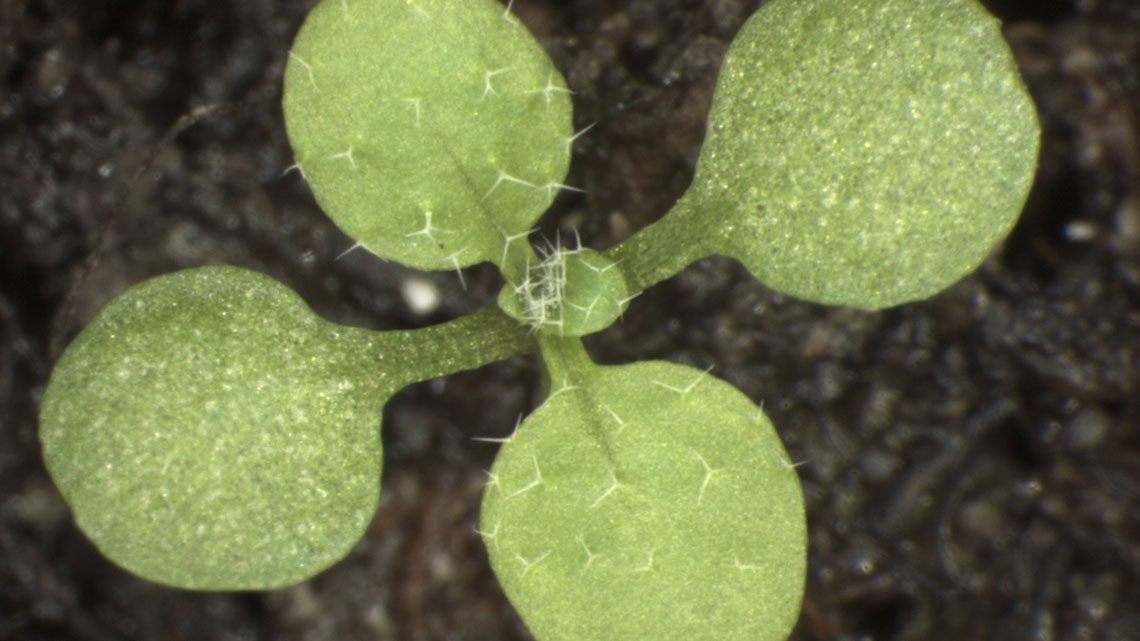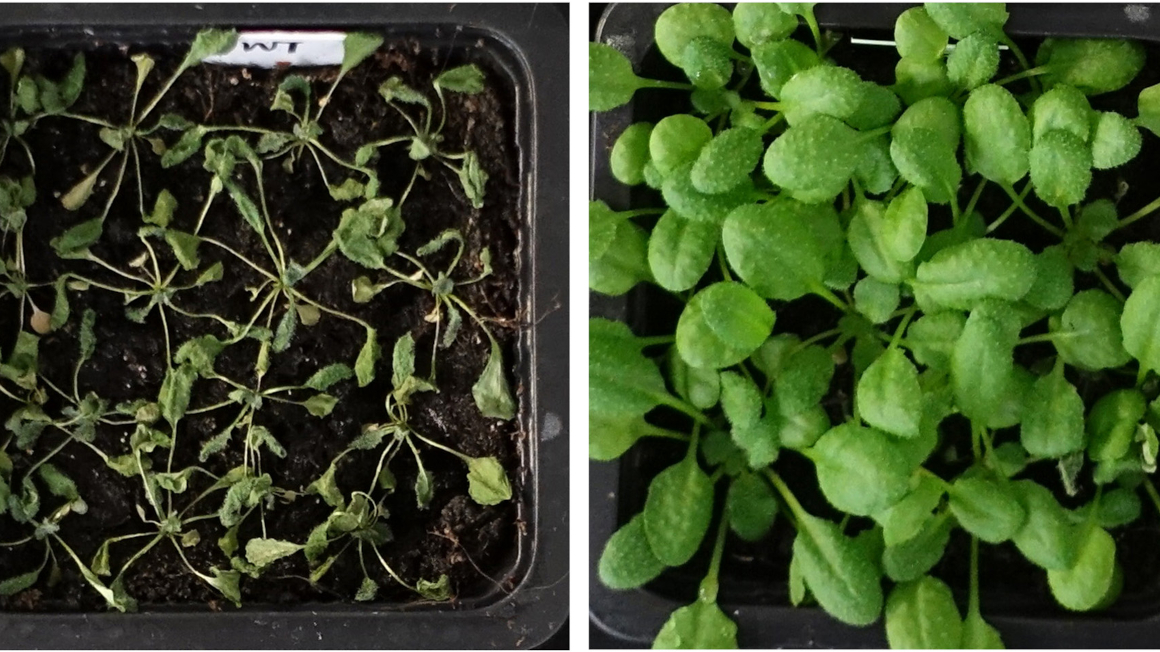How plants stop infections
Guardian molecules detect bacterial intruders in plants and induce the death of the affected cell, as German and Chinese researchers found out.

Just like humans and animals, plants also have to defend against bacterial infections. And they are using similar methods, too, plant researchers from the University of Cologne and colleagues from China report in two publications (Publication 1 und Publication 2) in the scientific journal "Science". NLR proteins (NOD-like receptors), which have a guardian function in the cell, play a key role.
Defense observed under the electron microscope
When bacteria invade a cell, they secrete what is known as effector molecules. These molecules prevent the immune response in the cell and allow the bacteria to multiply undisturbed. In the course of evolution, however, plants have learnt to be prepared for this attack, as the plant researchers were able to show with the example of thale cress. Using high-resolution cryo-electron microscopy, they have documented an effective defence mechanism.
Cell death as a reaction to a blocked immune system
NLR proteins are found in the plasma of plant cells. It is known from animal cells that, in the presence of bacterial effectors, such proteins trigger the cell death of the infected cell and thus prevent the spread of the infection. "Until now, we did not fully understand how plant NLRs work. And much of our understanding of how these mechanism work in plants is based on how they work in animals," explains Jijie Chai, head of the new studies.
His team has now been able to show that the NLR protein ZAR1 can indirectly recognize several bacterial effectors if it is kept in a latent defence state by another protein called RKS1. The complex of these two proteins binds to the cell wall in case of infection. The researchers suspect that this leads to the formation of a pore in the plasma membrane which indirectly leads to cell death and thus stops the infection. Other plant NLR proteins also form complexes and could therefore have similar functions for the immune system.
bl/um


